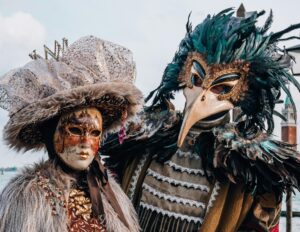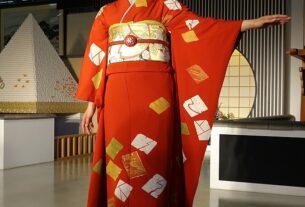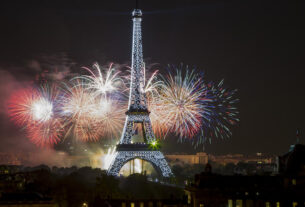Italy, a land of breathtaking landscapes and rich cultural heritage, is renowned for its colorful and diverse festivals that captivate both locals and visitors alike. From the grand historic parades to intimate village celebrations, Italian festivals are a testament to the country’s deep-rooted traditions and exuberant spirit. Each festival is a unique celebration of regional customs, culinary delights, and artistic expressions, offering a vivid glimpse into Italy’s vibrant cultural tapestry.
These festivals are more than just events; they are living expressions of Italy’s history, religion, and communal values. Whether it’s the thrilling horse race of the Palio di Siena, the elaborate costumes of Venice’s Carnival, or the local food fairs like the Sagra della Porchetta, each festival showcases the essence of its region and brings communities together in joyous celebration. These occasions are marked by lively music, traditional dances, and an array of delectable foods, reflecting the diverse and dynamic nature of Italian culture.
In this article, we’ll explore Italy’s most captivating festivals, delving into their origins, significance, and the traditions that make them unforgettable. From the festive streets of Rome to the charming squares of small towns, we’ll uncover the stories behind these vibrant celebrations and the cultural heritage they honor. Join us as we embark on a journey through Italy’s festival scene and experience the warmth, creativity, and communal spirit that define this enchanting country.
1. Carnival of Venice

(pexels.com)
The Carnival of Venice is one of Italy’s most iconic and historic celebrations, renowned for its elaborate masks and opulent costumes. This grand festival, held annually before Lent, transforms Venice into a stage for theatrical performances, masked balls, and grand parades. The tradition of the carnival dates back to the 11th century, with its golden age occurring in the 13th century. During this period, masks became a symbol of anonymity, allowing Venetians to engage in revelry and social interactions free from societal constraints.
At the heart of the Carnival of Venice are its stunning masks and costumes. Traditionally crafted from papier-mâché and adorned with intricate designs, the masks range from the elegant Bauta to the delicate Colombina. These masks not only add an air of mystery and magic to the festival but also allow wearers to embody various personas and characters. The costumes, often elaborate and historical, enhance the enchanting atmosphere of the celebration, reflecting the city’s rich artistic heritage.
The carnival kicks off with the Festa delle Marie, a historical event celebrating twelve young Venetian women in period attire. The festival includes a series of elegant masked balls held in the city’s historic palaces, along with theatrical performances, live music, and grand parades. A standout feature is the Volo dell’Angelo (Flight of the Angel), where a performer dressed as an angel descends from St. Mark’s Campanile, marking the official start of the festivities with a dramatic flair.
The Carnival of Venice captivates visitors from around the world, blending historical charm with modern creativity. The festival’s unique combination of masks, costumes, and theatrical events makes it a mesmerizing spectacle, reflecting Venice’s enduring cultural legacy and artistic spirit. Its enchanting atmosphere continues to draw tourists and locals alike, celebrating the city’s rich traditions in a truly magical setting.
2. Palio di Siena

(flickr.com)
The Palio di Siena is one of Italy’s most exhilarating and historic traditions, held twice a year on July 2nd and August 16th in Siena’s Piazza del Campo. This renowned horse race is more than just a sporting event; it is a vibrant display of the city’s rich history and fierce local rivalries. The race features the contrade, or city neighborhoods, each represented by a jockey riding a bareback horse. Though the race itself lasts only a few minutes, it is the culmination of months of preparation, strategy, and passionate competition among the contrade.
Each contrada is a distinct neighborhood with its own emblem, colors, and identity, contributing to the deep-seated rivalries that characterize the Palio. The preparation for the race involves rigorous training for the horses and jockeys, as well as extensive festivities and ceremonies. The selection of the horse and jockey is crucial, and the intense focus on victory highlights the importance of the Palio to the Sienese people. The race is run in three laps around the Piazza del Campo, and the excitement is palpable as the horses thunder through the historic square.
The Palio is accompanied by a grand array of pageantry and local celebrations. The event kicks off with a colorful historical procession known as the Corteo Storico, featuring participants in medieval costumes, flag-waving, and traditional music. The atmosphere is charged with energy, and the entire city becomes a stage for this dramatic spectacle. The race concludes with lively celebrations or poignant reflection, depending on the outcome, as the winning contrada celebrates its hard-fought victory.
The Palio di Siena is a testament to the city’s enduring traditions and sense of community. It embodies a blend of historical significance, competitive spirit, and local pride, making it a unique and cherished festival. The event not only honors Siena’s rich past but also brings together residents and visitors in a shared celebration of culture and heritage.
3. Ferragosto

(flickr.com)
Ferragosto is a vibrant Italian holiday celebrated annually on August 15th, marking the peak of summer. Its origins trace back to ancient Rome, where it began as a festival known as Feriae Augusti to celebrate the harvest and honor the Emperor Augustus. Over time, this Roman tradition evolved into a national celebration that embodies the joy of summer and the importance of leisure in Italian culture. Today, Ferragosto represents a time for relaxation, family gatherings, and communal festivities.
The holiday is a quintessential part of Italian summer, and many Italians take advantage of Ferragosto to enjoy an extended break from work. It is a period when cities often empty as people head to coastal regions, lakes, or the countryside to escape the heat and spend quality time with family and friends. The focus is on relaxation and enjoyment, with beach outings, picnics, and barbecues being common activities. The day is filled with leisure, as Italians savor the warm weather and the opportunity to unwind.
Local festivals and community events are key features of Ferragosto. Across Italy, towns and cities host various celebrations that include outdoor concerts, street festivals, and cultural performances. These events are often accompanied by spectacular fireworks displays, adding a festive and magical element to the summer nights. The communal spirit of these festivities fosters a sense of togetherness and celebration, reflecting the importance of community in Italian culture.
Ferragosto is more than just a holiday; it is a celebration of Italian heritage and the simple pleasures of life. It underscores the value of taking time to enjoy life’s moments with loved ones and reflects the deep-rooted traditions that define Italian cultural identity. As a day of festivity and relaxation, Ferragosto remains a cherished and joyful occasion, embodying the essence of Italian summer and the importance of family and leisure.
4. La Befana

(flickr.com)
On January 6th, Italy celebrates La Befana, a beloved figure in the Epiphany festivities. La Befana is a kind-hearted witch who flies on a broomstick, and according to tradition, she brings gifts to children across Italy. This charming character fills stockings with sweets and small presents for well-behaved children, while those who have been less virtuous might receive a lump of coal. The story of La Befana adds a magical dimension to the end of the holiday season, blending folklore with festive cheer.
The legend of La Befana is deeply intertwined with the Epiphany, a Christian holiday that marks the visit of the Magi to the infant Jesus. According to the tale, the Magi invited La Befana to join them on their journey to see the newborn Christ. She declined their invitation but later regretted her decision and set out to find the holy family, bringing gifts along the way. Although she never found them, she continues her search each year, visiting children and delivering presents, symbolizing her enduring quest and generosity.
In Italy, La Befana’s arrival is celebrated with enthusiasm and various communal events. Towns and cities host lively parades, colorful festivals, and special gatherings. A traditional highlight is the “Befana Fire,” where effigies of La Befana are burned, symbolizing the burning away of the old year and welcoming the new one. Local markets and fairs also feature festive treats, such as “carboni di zucchero” (sugar lumps shaped like coal), reflecting the playful nature of the tradition.
La Befana’s story and celebrations infuse the Epiphany with a blend of folklore, festivity, and community spirit, making it a cherished and joyful part of Italian culture. Her annual visit captures the imagination of children and adults alike, continuing a tradition that has delighted generations.
5. Festa della Repubblica

(commons.wikipedia)
Festa della Repubblica, held on June 2nd, is Italy’s National Day, commemorating the birth of the Italian Republic in 1946. This pivotal day marks the end of the monarchy and the establishment of a democratic republic following a national referendum. It serves as a powerful reminder of Italy’s transition to a republic and its commitment to democratic values, reflecting the nation’s pride in its political heritage.
The highlight of the celebrations is the grand military parade in Rome’s Via dei Fori Imperiali. This impressive event showcases Italy’s military capabilities and precision, featuring a procession of soldiers, military vehicles, and aircraft performing coordinated flyovers. The parade is attended by key figures, including the President of the Republic, who delivers a speech emphasizing the significance of the republic’s democratic principles and Italy’s progress. This formal event is a testament to the country’s military and political history.
Throughout Italy, Festa della Repubblica is celebrated with a range of public events and festivities. Cities and towns host concerts, cultural performances, and art exhibitions that celebrate Italy’s rich artistic and cultural heritage. Fireworks displays add a festive touch to the day, illuminating the night sky and fostering a joyful atmosphere. These events highlight the nation’s unity and its cultural vibrancy, bringing communities together in celebration.
The day also serves as an opportunity for reflection on Italy’s journey as a republic. Schools and community organizations often organize educational activities to discuss Italy’s history and the values of democracy. Festa della Repubblica not only honors Italy’s historical milestones but also reinforces national pride and a shared commitment to democratic ideals.
6. Sagra

(commons.wikipedia)
Sagra refers to a series of local festivals throughout Italy that celebrate regional food, music, and cultural traditions. Each sagra is a vibrant expression of local heritage, centered around a specific local produce or dish that highlights the unique flavors of the region. These festivals are more than just food events; they are a lively showcase of community spirit, culinary excellence, and regional pride.
One of the most famous examples is the Sagra della Porchetta in Ariccia, located in the Lazio region. This festival is dedicated to porchetta, a succulent roast pork seasoned with herbs and slow-cooked to perfection. The event features numerous stalls offering this culinary delight, accompanied by live music and traditional folk dances. The Sagra della Porchetta is a testament to the communal joy and rich culinary traditions of the region, attracting both locals and visitors eager to savor the flavors of Lazio.
Another celebrated sagra is the Sagra del Tartufo in Alba, held in the Piedmont region. This festival honors the truffle, a highly prized delicacy known for its distinctive flavor and aroma. The Sagra del Tartufo draws food enthusiasts, chefs, and connoisseurs from around the world. Attendees can sample and purchase truffles, participate in cooking demonstrations, and enjoy gourmet tastings. The festival also features local wines and artisanal products, emphasizing the region’s gastronomic heritage and its role in Italy’s culinary landscape.
Sagre offer a unique opportunity for communities to showcase their culinary traditions and engage in cultural festivities. They provide a taste of Italy’s regional diversity, allowing visitors to experience local hospitality and enjoy the rich flavors that define each region. These festivals are a cherished part of Italian culture, celebrating the country’s heritage through food, music, and community gatherings.
Conclusion,
Italy’s festivals are a vivid celebration of the country’s rich cultural heritage, offering an immersive experience into its diverse traditions and communal joys. From the grandiose parades and historical reenactments to the intimate local fairs and food celebrations, each festival reveals a unique facet of Italian life, deeply rooted in history and marked by vibrant expressions of regional identity.
As we’ve explored the tapestry of Italy’s festivals, it’s clear that these events are more than mere gatherings; they are dynamic reflections of the country’s spirit and creativity. They embody the passion, artistry, and unity that define Italian culture, drawing people together to celebrate shared heritage and local pride. Each festival, whether grand or modest, contributes to the rich mosaic of Italy’s cultural landscape, making every celebration a testament to the enduring charm and vitality of Italian traditions.
In experiencing these festivals, we not only witness the colorful pageantry and heartfelt celebrations but also gain a deeper appreciation for the values and stories that shape Italian society. The festivals are a reminder of the importance of tradition in preserving cultural identity and fostering community connections. As we conclude our journey through Italy’s festival scene, we are left with a profound sense of the country’s vibrant essence and the universal joy found in celebrating life’s rich traditions.



